Spotlight on Santosh Korthiwada
Nov 8, 2016
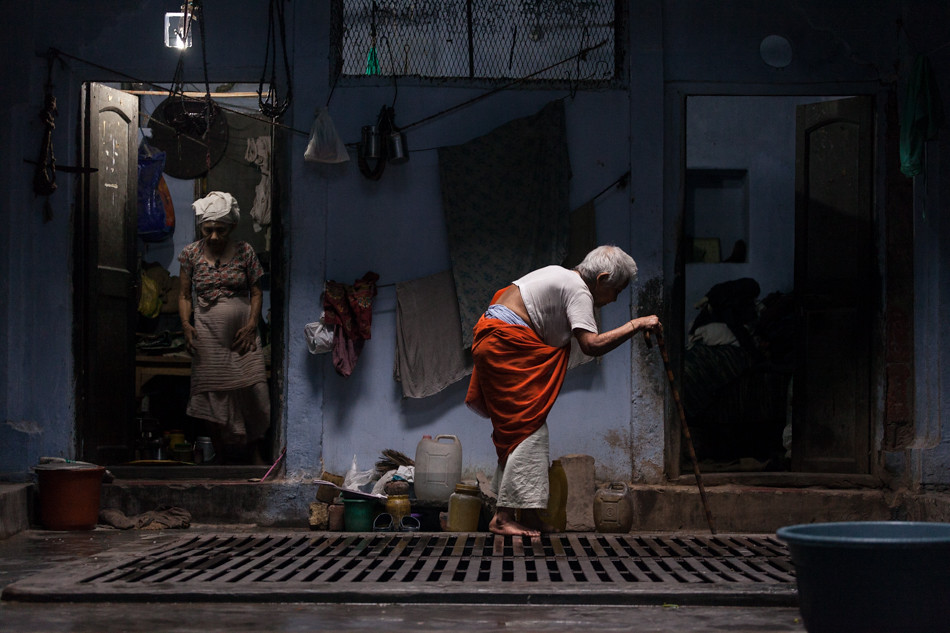
TID:
Santosh, this is a touching photograph. Can you tell us some of the background of the image?
SANTOSH:
This was one of those rare moments in life when I was completely present and lived in the moment and saw nothing else. It was as if the time just stopped, heartbeat raced and I’m pretty sure that I skipped a few breaths. So glad that I remembered my responsibility as a photographer, remembered that I was holding a camera and remembered to look through the view finder, remember to check everything was okay and finally remembered to press the shutter. All this happened in a few seconds and then the moment disappeared forever from reality.
I made this image when I was with my friend at the home for the elderly widows, managed by the Nepali ‘Pashupathinath’ Temple in Varanasi, India.
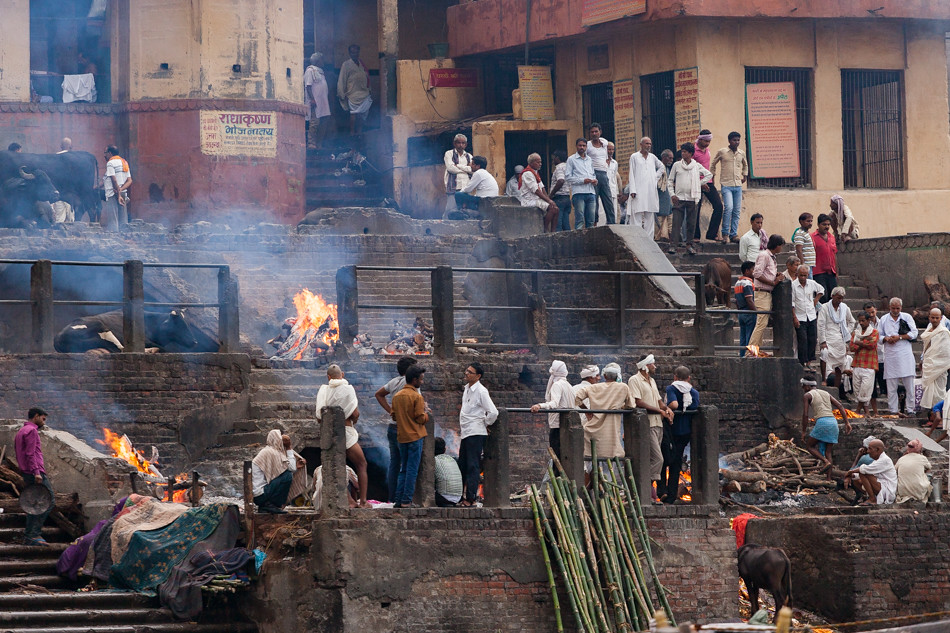
TID:
Can you tell us a little bit about the background of your work. What drew you into it and why?
SANTOSH:
I was born and raised in Chegunta, a small village in the state of Telangana in southern India. I studied in a public school and while rest of my friends were excelling academically, all I ever did was draw and color things. Art was encouraged as long as it’s a hobby. One can only have careers in the sciences, law or accounting, everything else and especially art was like a crime. Out of fear and insecurity, I studied (but never learned) zoology, botany and chemistry. But my interest in the fine arts continued, secretly. I remember it was my first semester undergrad microbiology class and one day I stood up and left.
I borrowed some money from a friend and filled up an application to join a fine arts school. Five years later, I got into an IT company through internship and had a career in learning design team for 13 years. But I needed a creative outlet for self-expression and to experience the joy of creating art, so I picked up my first roll of Kodak film and a 35mm camera in the year 2000.

As I grew in my career, concurrently, my interest in photography grew. I got married to my dearest friend Kavya and our son Ishaan was born in 2008. Over time, hobby became passion, passion turned into love and love transformed into madness. It’s not that I didn’t like my job, I didn’t find meaning in it. For me, meaning and purpose was in the outside world; in the travels, meeting strangers and telling stories of everyday heroes no one seemed to care. But I was trying my best to do my well-paid IT job because it was taking care of my family, pay for the house and car. But it was like I was dying a slow, painful death inside.
But my wife noticed my struggle and suffering. She asked me to stop everything, take a break and she will stand by my decision whatever it may be. I decided to pursue masters in photography and came to San Francisco in 2014. So here I’m, going to school studying and actually learning something. My wife and son are back home in India, staying strong and keeping me strong.
TID:
Do you feel like a different photographer there then when you’re here? If so, what are the differences?
SANTOSH:
Every place has its own special impact on the photographer. The connection, association and relationship with the place and the people becomes an integral part of the photographer and the photographs. When I’m in India, my natural tendency is to lean towards subject matter related to people. Photographing people across India is what I started my career with.
When I moved to San Francisco, I really didn’t know what to do as it took me some time to settle down mentally. Initially everything seemed different but as time passed, I realized that both the countries are the same at the core. The issues we face, the dreams we have, the sorrows we share, our relationships with others; everything is the same. Things look way different superficially; the appearances are different not the essence.
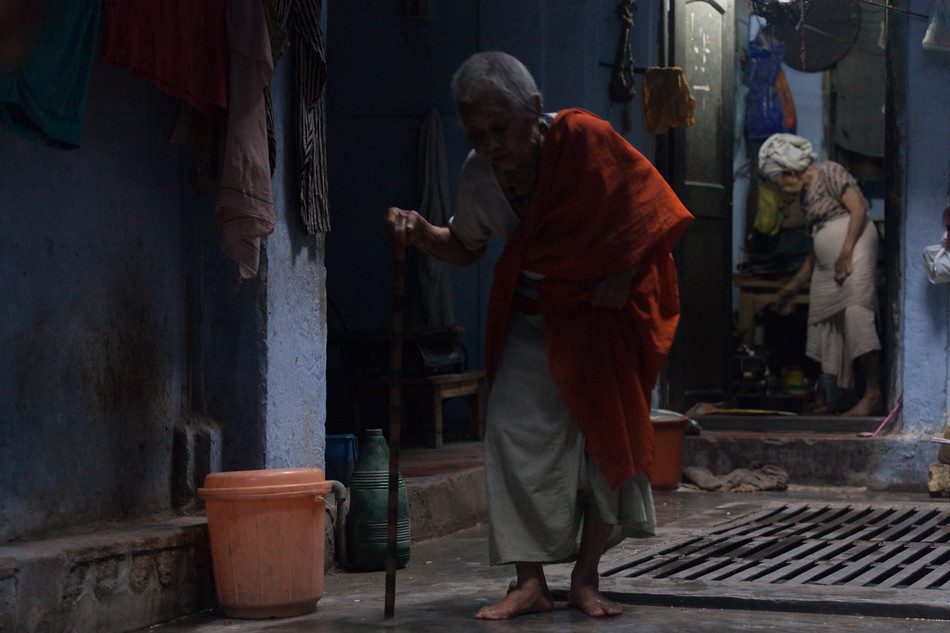
I grew as a person and as an artist after I moved here. United States is my second home as the friends I made and people I met have helped me shape my thinking, creativity and even emotions. However, staying away from my wife and son has made me inescapably lonely, and I miss them every single minute. But, I can’t give up and always remind myself of my responsibilities so being in between taught me the importance of stillness. I don’t feel super proud of my accomplishments, nor do I feel depressed and dejected of my failures. There is a sense of detachment and attachment at the same time. It’s absurd and I like it.
TID:
Now, back to the main image. Can you walk us through the moments leading up to it? Additionally, can you talk about what you were thinking while making the image?
SANTOSH:
My grandfather and grandmother were religious people and spoke very fondly about Kashi. Varanasi is also called as Kashi. Many people from Hindu communities believe that if they leave their body in Kashi, their soul is released from the eternal cycle of life and death. Hundreds of elderly people go to Varanasi in their final years and wait for their inevitable death. Unfortunately, my grandparents passed on when I was very young, so Kashi was always at the back of my mind. Being there and sitting silently at the Ghats on the banks of river Ganges makes me feel close to my grandfather and grandmother again. I probably see them in every elderly person and especially the elderly people in Kashi.
As I mentioned earlier, I made this image at the home for the elderly widows, managed by the Nepali Pashupathinath Temple in Varanasi, India. The first time I went there was in 2013 but I did not have the strength to seek permission to go and meet those beautiful women. But I went again in 2015 and this time I made sure to meet them. Unless it’s an assignment, I don’t always go to a place with the intention of making pictures. Sometimes I just want to meet people and talk, see a new place and eat new things and just be.
Photographs will follow. Same thing happened here, as me and my friend spent a good time talking to the women, we made them laugh and tell stories, we saw them pray and sing. I did take some photos in between making sure they are not uncomfortable. We exchanged goodbyes and goodbyes are very difficult for me. So I still sat in the room watching them leave one by one. Some of the women were over a hundred years old, were taking smaller steps and walking really slowly.
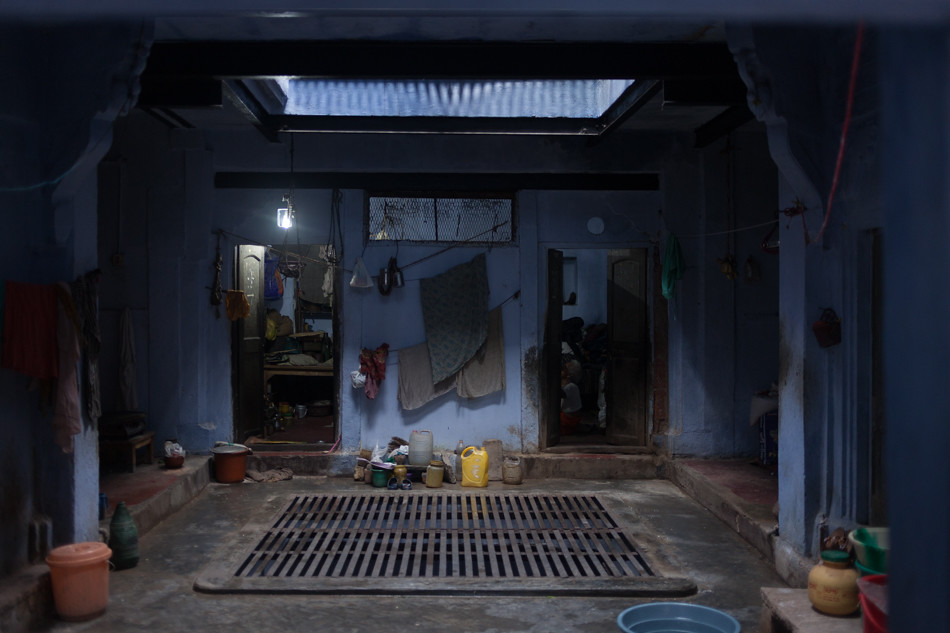
It was a heartwarming and heartbreaking sight to see. We waited a few more moments and as I stepped out of the room, I saw one of the oldest woman still walking to her room and I just could not take my eyes off. The next time I go to Varanasi, I will meet those lovely ladies again and bring them some prints of my pictures.
I don’t completely agree when photographers say that they take pictures spontaneously. Sure the action might be spontaneous but there are an extraordinary amount of imagination, ideas, dreams, memories, sacrifices, happinesses, sufferings, knowledge, thousands of hours of hard work and on and on…all of it leading to that single spontaneous action.
TID:
I’m always interested in how photographers problem solve. What problems did you encounter during this project/making of the images and how did you work to overcome them?
SANTOSH:
To make meaningful imagery and have a purpose for the photographs is very substantial for me. Especially when it comes to people, I must be clear about why am I making that image. I question and challenge myself to be in check of that.
A photograph is a collaboration between man, nature and technology so it’s not right if only the photographer gets to keep the credits. Exploitation of human condition is one of the worst things one can do and I know that I’m not like that. As I mentioned before, the first time I went to Varanasi was in 2013 and I saw the home for the elderly widows and I really wanted to photograph them but I didn’t know why. Does my photograph make any difference? Bring any change? Does it matter? This is a big problem I had to solve for myself and however cliché it might sound like, ‘time’ does solve things.
I realized that sometimes it’s not possible to give back to the same people but the important thing is to give back in some form to the society and nature. Photography should be as much giving as taking. So I give back whenever, wherever and whatever I can. It could be prints, talks, kindness or words…just like these.
Technical proficiency is important for a photographer. At the beginning of my career, I focused more on the moment and whether I captured it or not. But as I started printing my images and cursed myself for ruining many good ones because of very small issues. I had trouble understanding my gear properly and have total control on it, especially in low light conditions. I don’t know how many pictures I had to trash because of not being able to capture the moment properly.
However, I improved over the years and learnt about strengths and limitations of my equipment, studied various lighting conditions, got better at reading my instincts and now I rarely miss-shoot. If I really like an image, I make sure to print it and read the image carefully. It not only improves your attention to detail and craft, a print elevates the subject matter to the next level.
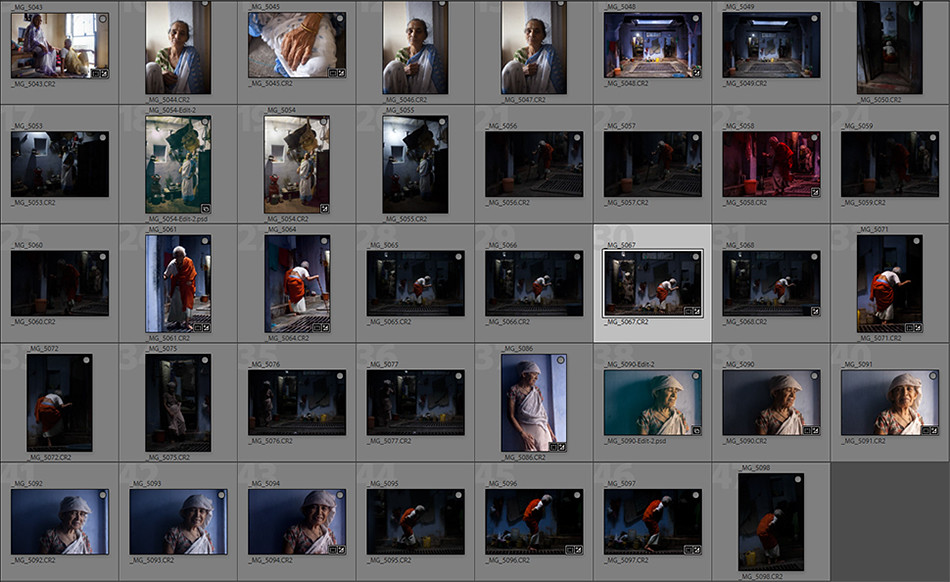
TID:
What has surprised you about during this experience and what did you learn from it?
SANTOSH:
Very few people have the ability to fully understand their capabilities. At least, I don’t understand what I’m capable of, until I do something. That’s one of the reason, I’m interested in knowing others and listen to their stories so that I can learn about human potential, perseverance and psyche.
When I met the wonderful women in Varanasi, I had no idea of what to expect. However difficult their living conditions were, they did not give up on life. Some of them were abandoned, some of them were disowned by their families, some of them were forced to be here and some of them voluntarily came here and yet each one of them had the same spirit. They kept their faith and devotion strong, hoping that one day they leave their last breath in Varanasi, the most sacred place according to their beliefs. These are extraordinary abilities. More than surprised, I was inspired.
During my stay at Varanasi, I met many older gentlemen and made their portraits. I did not realize that I was photographing older men doing traditional jobs until my friend who was with me pointed it out. Unconsciously, I was making a photo series for a long time but it’s the people I meet who inspire my thinking, bring out lost memories and remind me of my responsibility. Title of the series is ‘Endangered Sapiens’ and I’m making this for my 7 year old son.
We receive surprises all the time, as long as we really open ourselves to the possibilities internally and externally.
TID:
In conclusion, what advice would you have for someone wanting to do similar work as you?
SANTOSH:
You are not a robot with a machine in hand. You are not an operator of a camera. You are a loving, compassionate human being who has an incredible responsibility to take the photographic legacy forward. Don’t plan everything in advance and don’t design everything in your head. Leave enough space so you let things unfold in front of you and surprise you. Learn to listen to your heart. It’s going to be an extremely difficult path. If not making meaningful images drives you insane, you are heading in the right direction.

:::BIO:::
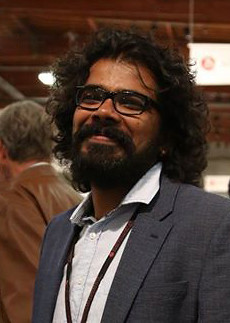
Through photography, I try to probe and pose questions about what is seen and perceived so that the self-reflection goes beyond surfaces and generate a personal intellectual space. With deliberate visual pairings, I propose an aesthetic familiarity and discomfort of trying to solve a riddle. In my photographs, I try to bring chaos and stillness together and create an imaginary partnership which helps me find a contemplative solitude in the current pace of life and its sudden disappearance.
Photography brought me joys and miseries and became my only ally and nemesis at the same time. The search, the walks, the heartbreaks, the friendships, the reflections, the questions, and the simple things that come along and make life an extraordinary experience, however wretched; I owe it to the magic of photography. Devotional poetry of Rumi, visual poetry of Harry Callahan and Minor White have given me new insights and pierced the ordinary through my heart, mind and soul.
What you see is an amalgamation of physical, mental and spiritual projection of my consciousness. In simple words, 'a photograph'.
Website:
Instagram:
Facebook: